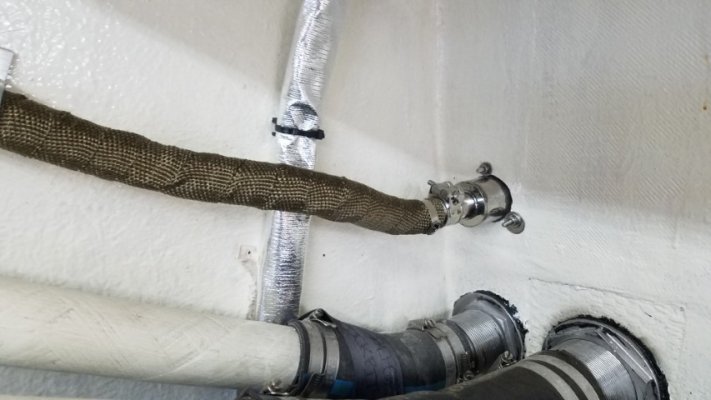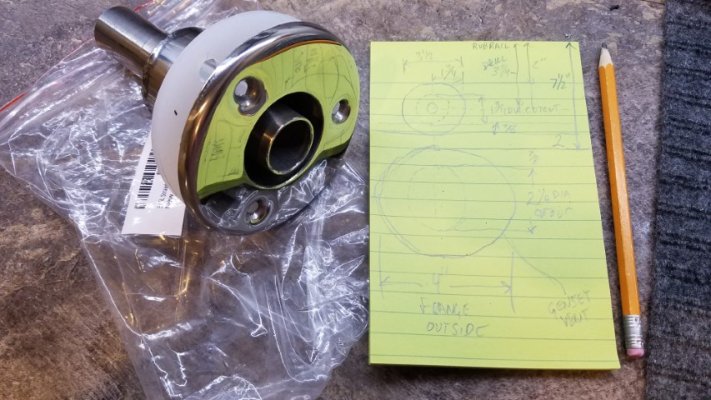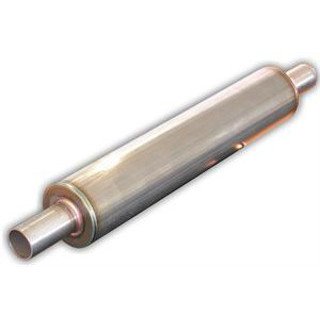Nomad Willy
Guru
Marco,
I’ve got the longest recommended exhaust run for the Wabasto. It runs from a compartment just aft of the engine compartment to the near center of the stern of the round stern boat. Probably nearly 4’ above the water. It’s insulated along the entire run and that’s good as runs right by a plastic 50 gal. water tank. Been running for 13+ years now and no problem. It was professionally installed.
Never had any of the problems listed above. It works just like my other boat that had the absolute minimum length of exhaust pipe. The Wabasto isn’t w/o negative features like a bit of noise, the need to be cleaned at times running on diesel and the need to be started every 3-4 weeks. That may not be true of all installations though. I don’t know for a fact but I remember when I was shopping I did look at the Wallace and considered everything at the time. The thing I didn’t like was probably fuel consumption. I’m guessing that the significant difference between the two types of heater. How many BTU’s per gallon of burn. Perhaps the Wallace is easier to install too .. ??
But re one comment above saying the Wallace is noisy underway my Wabaso can not be heard underway. I need to step out on deck when it’s cool or cold to be reminded that the Wabasto is on.
Kasanders wrote that the Wallace is “dead quiet”. As I remember they really are.
And FF reminded us that fiberglass and resin structure once burning is hard to put out.
I’ve got the longest recommended exhaust run for the Wabasto. It runs from a compartment just aft of the engine compartment to the near center of the stern of the round stern boat. Probably nearly 4’ above the water. It’s insulated along the entire run and that’s good as runs right by a plastic 50 gal. water tank. Been running for 13+ years now and no problem. It was professionally installed.
Never had any of the problems listed above. It works just like my other boat that had the absolute minimum length of exhaust pipe. The Wabasto isn’t w/o negative features like a bit of noise, the need to be cleaned at times running on diesel and the need to be started every 3-4 weeks. That may not be true of all installations though. I don’t know for a fact but I remember when I was shopping I did look at the Wallace and considered everything at the time. The thing I didn’t like was probably fuel consumption. I’m guessing that the significant difference between the two types of heater. How many BTU’s per gallon of burn. Perhaps the Wallace is easier to install too .. ??
But re one comment above saying the Wallace is noisy underway my Wabaso can not be heard underway. I need to step out on deck when it’s cool or cold to be reminded that the Wabasto is on.
Kasanders wrote that the Wallace is “dead quiet”. As I remember they really are.
And FF reminded us that fiberglass and resin structure once burning is hard to put out.
Last edited:





 Tom, Not sure about any moisture, they are a oil fired unit unlike propane. I have a Wallas onboard and been around other similar units. There is no reason for moisture to develop, Just saying
Tom, Not sure about any moisture, they are a oil fired unit unlike propane. I have a Wallas onboard and been around other similar units. There is no reason for moisture to develop, Just saying

 Didn't see your following post- Our wallas is as quite as a laying rock. and the heat is great!!
Didn't see your following post- Our wallas is as quite as a laying rock. and the heat is great!!